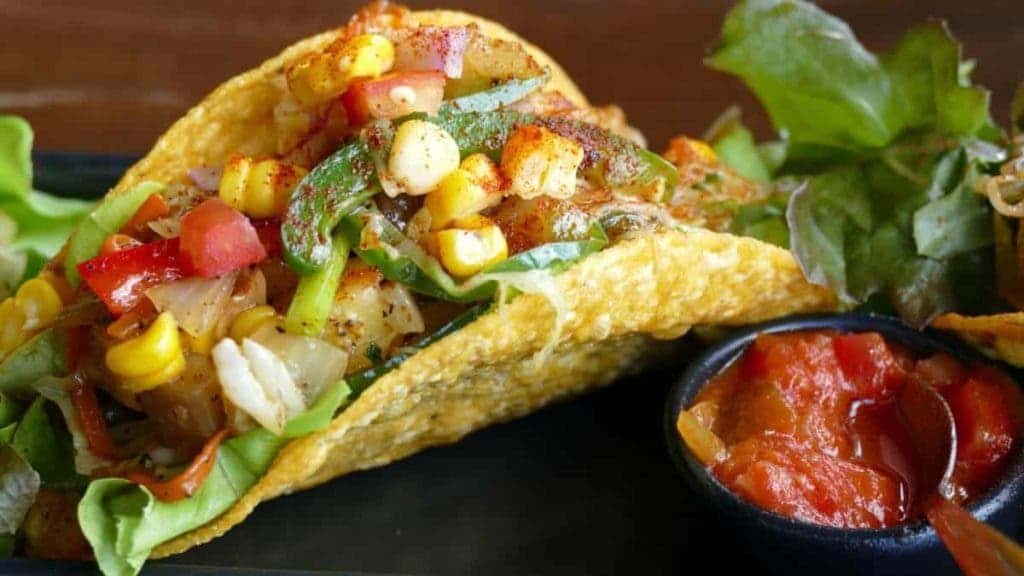You could be eating a healthy and sustainable diet for around $100 a month regardless of where you live. But for many people, that’s still too expensive.

Earlier this year, a stellar team of researchers from the EAT-Lancet commission published the so-called ‘planetary diet’ (also called the EAT-Lancet diet). The goal of the diet was to figure out how to feed the world’s growing population in a way that is sustainable.
Now, a new study calculated how much that would cost in real life.
How much to save the planet?
It often flies under the radar that the food we eat is one of our biggest contributions to the global carbon footprint. It’s not really a question of how much you eat, but rather of what you eat. Several recent studies have shown that reducing meat consumption is one of the most sustainable things you can do. The planetary diet is no exception.
The planetary diet emphasizes low meat consumption 14g a day of red meat and 29g a day of chicken (realistically, this would mean 1 and 2 weekly servings, respectively). You can also have 2 servings of fish per week, along with 2 medium eggs and a quarter kilogram (half a pound) of dairy. The rest of it — the bulk of the diet — needs to come from plants.
This means that while you can eat meat most days (all weekdays, really), you need to have a diet that’s largely based on plants. Fruit and vegetables should make about half of what’s on our plates, particularly those which come from the same area we live in (so no cassava unless you live in Africa). Having less emphasis on starchy foods (such as potatoes) is also a good idea.
Other than this, there’s a great deal of variety within this diet. Here’s an example of what an average day’s food would comprise:

- Nuts – 50g a day;
- Beans, chickpeas, lentils and other legumes – 75g a day;
- Fish – 28g a day;
- Eggs – 13g a day (so 2 medium eggs a week);
- Meat – 14g a day of red meat and 29g a day of chicken (more likely, this would be compressed into a portion every week);
- Carbs – whole grains like bread and rice 232g a day and 50g a day of starchy vegetables;
- Dairy – 250g – the equivalent of one glass of milk;
- Vegetables – (300g) and fruit (200g);
In the new study, researchers quantified how much that diet would cost in real terms.
Less than $3 / day — is that good?
Of course, the price can vary significantly from area to area. But given reasonable choices, the prices are surprisingly close — and surprisingly low.
The analysis was carried out in three stages: first, researchers gathered information about all available foods in all countries with available data, figuring out how much calories different foods can provide, and for what cost. They looked at which foods can meet the EAT-Lancet diet nutrient intake. Then, they looked at the minimal local costs of the diet in different parts of the world. The researchers also identified for whom this cost is affordable, and for whom it is not.
Most of the calories (2,500 per day) would come from staple starchy plants such as rice, wheat, and corn (around 800 calories per day). Legumes would come in second (at around 500 calories per day), and fruits, unsaturated oils, meat, milk, and eggs would also provide a significant part of the calories. The foods the researchers calculated took into account both the necessary calorie intake and nutrient intake.
Since the last comprehensive assessment of food was done in 2011, local currency was converted to 2011 dollars using purchasing power parity exchange rates. The price distribution was as follows:
- in high-income countries, people can follow the planetary diet for $2.66 – $3.02 per day.
- in low-income countries, people can follow the planetary diet for $2.42 – $2.72.
That’s really good news for people in richer countries (as it means they can spend a low proportion of their income on food and still eat a healthy and sustainable diet) — but it’s very bad news for people in lower-income countries, as it means that the poorest families won’t be able to afford it.
Most people in the developed world, however, don’t have this excuse. In almost all places in the developed world, a sustainable diet can come at a comparable or even cheaper cost than most diets.
There were also some remarkable geographical differences. Unexpectedly, Latin America and the Caribbean have the highest prices for this diet: $3.42 — $3.87 / day. Since this area also includes low-income countries, it means that many people would find it difficult to afford. Among regions, diet cost as a percentage of mean income was lowest in North America (4.42 – 4.63%) and highest in sub-Saharan Africa (72 — 96.28%).
Researchers estimate that at least 1.58 billion individuals (mostly from sub-Saharan Africa and south Asia) will not be able to afford this diet at all. This is probably a very low estimate — after paying for other non-food necessities (such as housing, education, and transportation), many other people will almost certainly also not be able to afford a sustainable diet. Most people in the developed world, however, don’t have this excuse.
The researchers write:
“Making the EAT–Lancet reference diet more affordable for the poor would require some combination of higher incomes and lower prices, without which individuals cannot obtain sufficient quantities from each food group. Lower prices could come from improvements in local production, marketing, and trade, and expanding the range of lower-cost options in each food group. Inclusive economic growth is needed for poor households to afford a larger quantity of more nutritious foods, but variation in prices and income ensures that targeted investments in nutritional assistance and social safety nets would also be needed for food insecurity and malnutrition to be eliminated.”

Feeding billions of people is no easy feat, and while things have improved in recent decades, we’re still doing a pretty poor job at it. More than 2.5 billion people worldwide suffer from at least one form of malnutrition, with approximately 800 million people undernourished, around 2 billion adults overweight or obese, and over 2 billion people with micronutrient deficiencies.
Poor diets are now the world’s leading cause of morbidity and mortality in the world, due to both inadequate consumption of nutritious foods and excess consumption of harmful ones. Obesity has emerged as a major health problem in recent decades.
Excessive dietary habits are not only bad for ourselves — they’re also bad for the planet. The agricultural sector now accounts for up to 27% of global greenhouse-gas emissions and is a major cause of freshwater pollution, soil degradation, and loss of biodiversity. It is far from achieving any degree of sustainability, and it just needs to change. The planetary diet is not a fixed diet but rather a set of recommendations. As long as you don’t eat a lot of meat and dairy and your diet consists mostly of plants — you’re probably good to go.
But, if you need any suggestions, here are just a few.
Do the planetary diet at home
Here are some rough suggestions for how you can build a balanced planetary diet throughout the day.
Breakfast
- The simplest choice would be milk & cereal or granola, with some nuts and fruits;
- Whole wheat toast with jam or fruits;
- Rice pudding with fruit syrup;
Lunch
- Whole bread sandwiches with cheese, lettuce, and tomato (maybe a slice of ham or chicken);
- A bean and rice chili, with peppers and veggies;
- Mushroom risotto with a vegetable stir-fry;
- A falafel wrap with hummus;
- Veggie tacos;
- You have five meat servings over the week (one meat, two fish, two chicken). Of course, you can substitute these around, and say have six chicken servings over the week and only one meatless day. However, reducing meat consumption is one of the keys of this diet.
Dinner
- Whole wheat pasta would be a very strong contender — and as we all know, there’s a million ways to make pasta. Go easy on the meat and cheese, and you’re good to go;
- Salads are another good idea, and they don’t need to be green leafy salads either — mix in some carrots, apples, or even a bit of fish;
- Creamy risotto;
- A warming curry with lentil and green beans;
- A chicken ramen soup with herbs and greens;
- Cauliflower cheese.
This is what a grocery list of the planetary diet might look like:
Vegetable shopping
2 yellow peppers
2 green peppers
3 red peppers
1 sweet pepper
4 red chilies
5 red onions
2 yellow onions
4 spring onions
1 shallot
2-pack garlic
3 lemons
2 lime
1 broccoli
2 cauliflowers
1 package of small salad leaves
400 g oyster or portobello mushrooms
6 cm of fresh ginger
500 g carrots
100 g kale
5 medium beetroots
1 small celeriac
400 g tomatoes
400 g plum tomatoes
400 g cherry tomatoes
2 ripe avocados
1 medium mango
100 g radishes
100 g red cabbage
Fresh or pickled jalapeños
Bundle of fresh basils
Bundle of fresh coriander
Bundle of fresh parsley
Bundle of fresh mint
Others
1 package of fresh yeast
400 ml plain flour
400 ml wholemeal flour
250 g whole wheat noodles
250 ml bulgur wheat
300 ml pearl barley
200 ml tomato sauce
1 jar tomato purée
200 g grated cheese
80 g feta cheese
100 ml parmesan cheese
600–800 g cod fillet
1 jar of basil pesto
1 package of sushi sheet (nori)
1 small bottle apple juice
1 package of vegetable stock
1 package of chicken stock (or extra vegetable stock)
1 package of beef stock/broth (or extra vegetable stock)
50 g hazelnuts
50 g pumpkin seeds
4 wholemeal tortilla wraps
12 small corn tortillas
1 small package potato starch
1 small carton of natural yogurt
4 eggs
850 g chickpeas
500 g brown beans
400 g chicken breast (or 400 g tofu, tempeh or saitan if you don’t eat meat)
400 g chuck steak (or 400 g extra brown beans if you don’t eat meat)
1 dark chocolate (at least 70%)
The study has been published in The Lancet.






